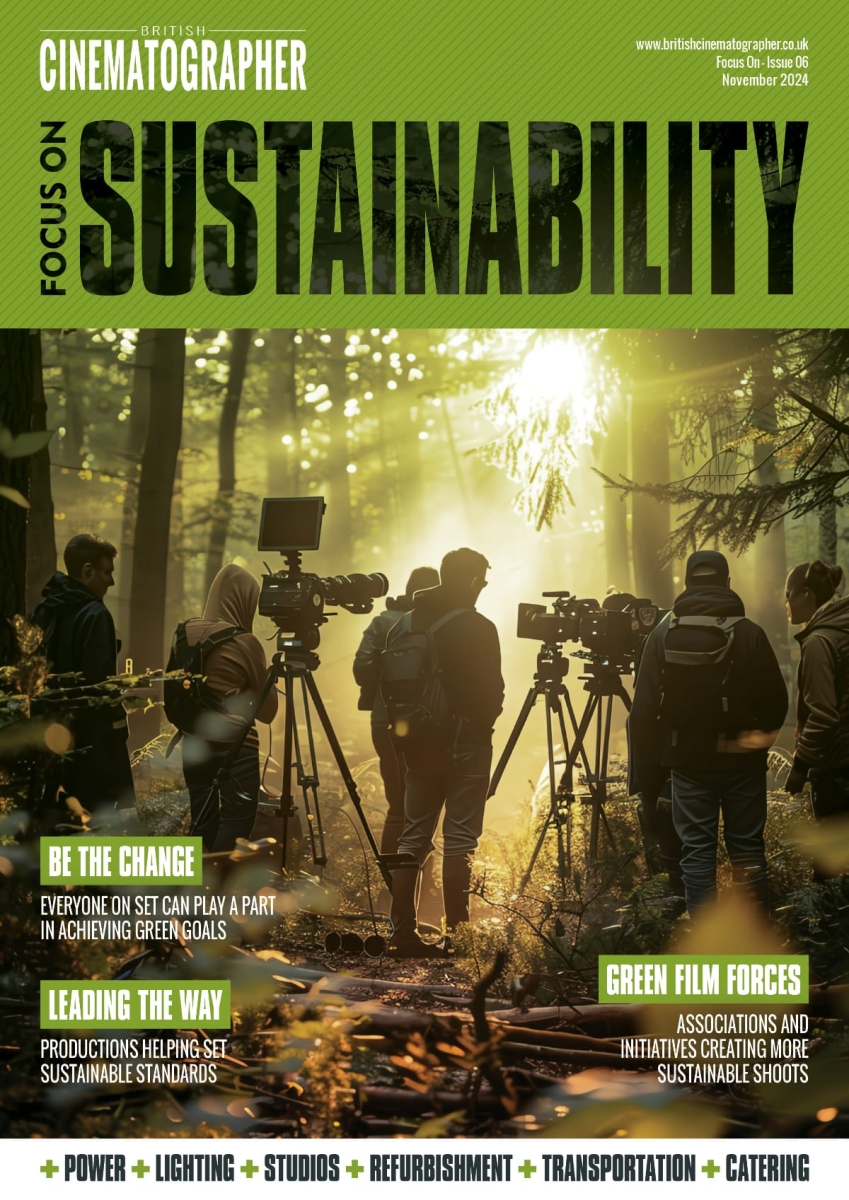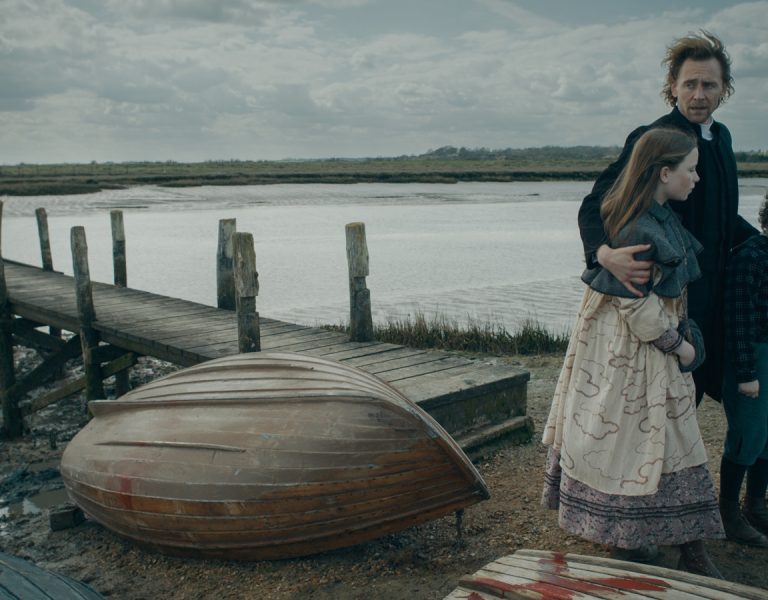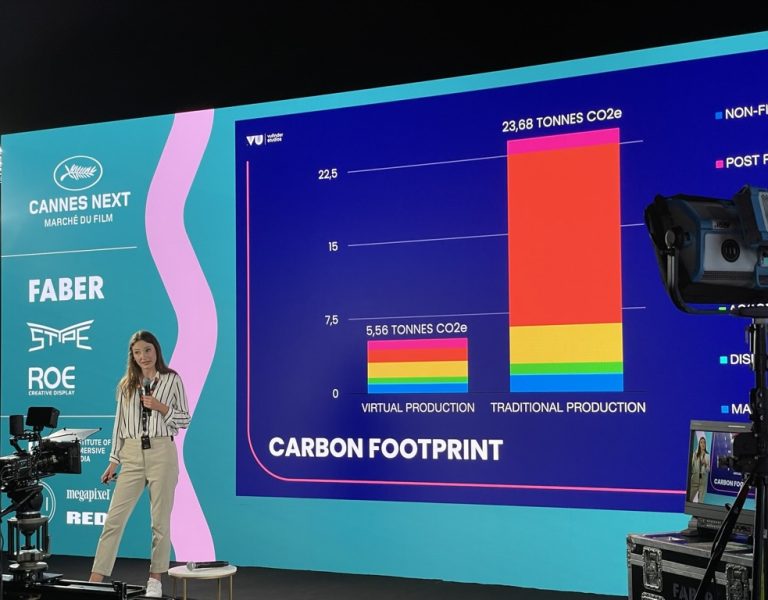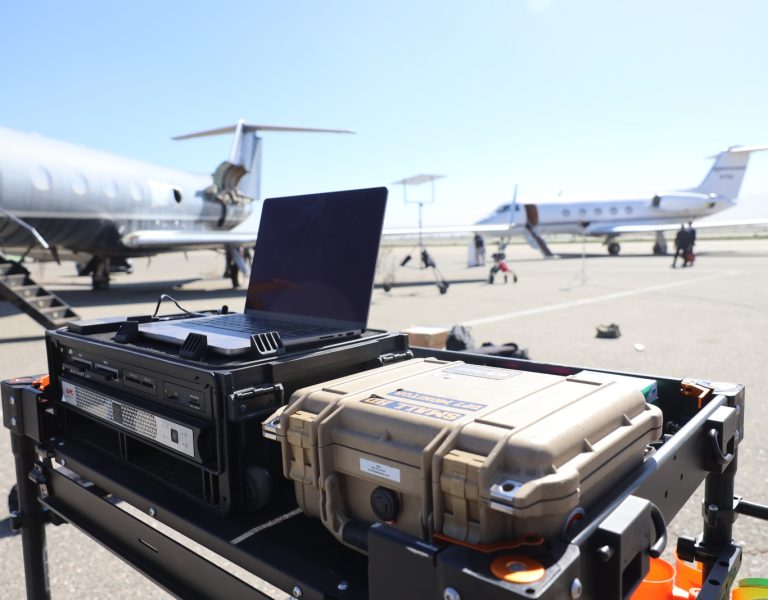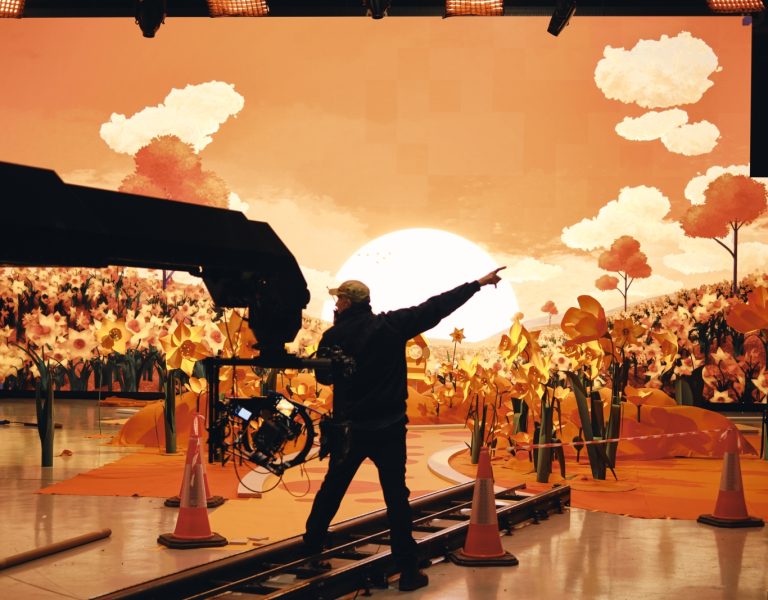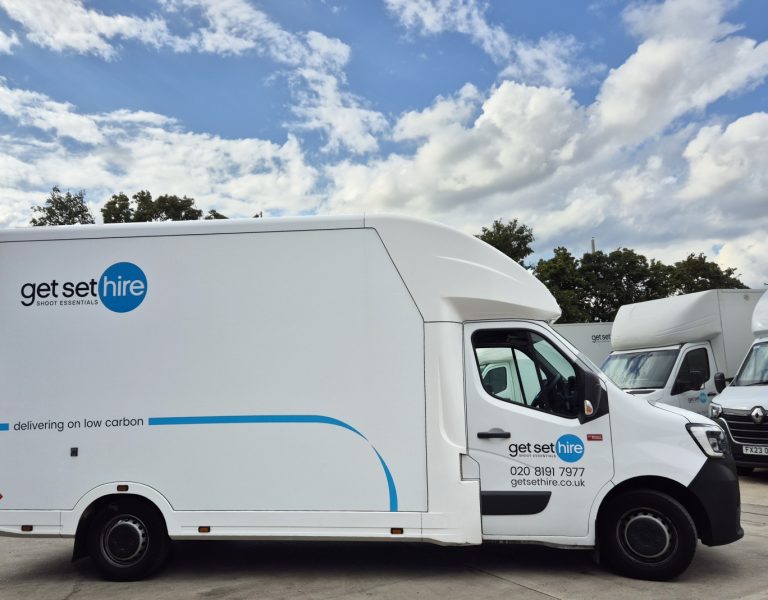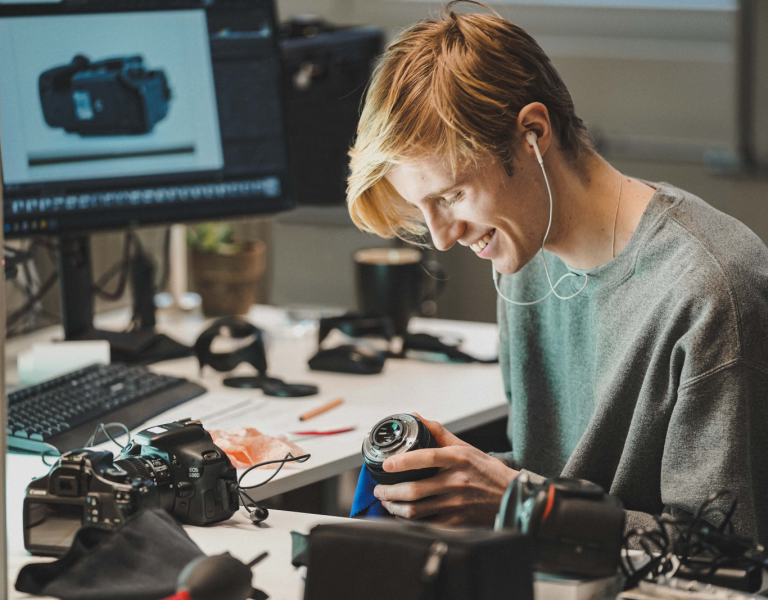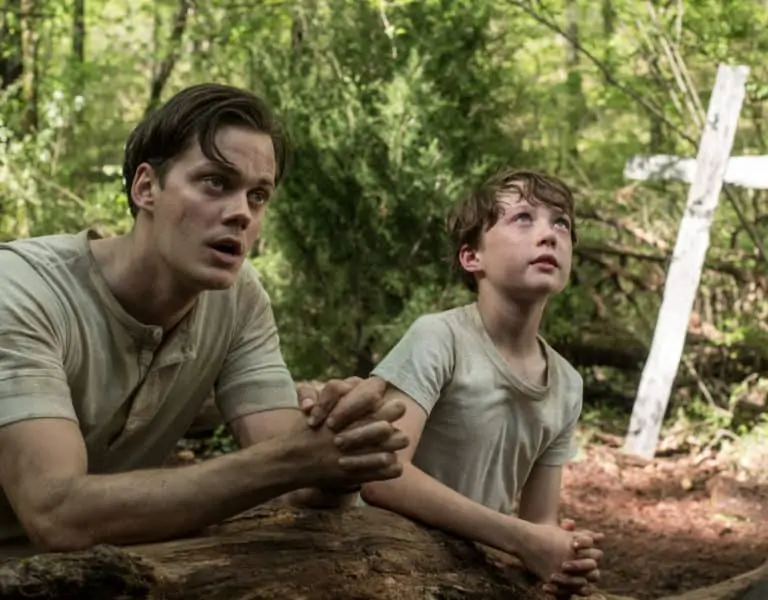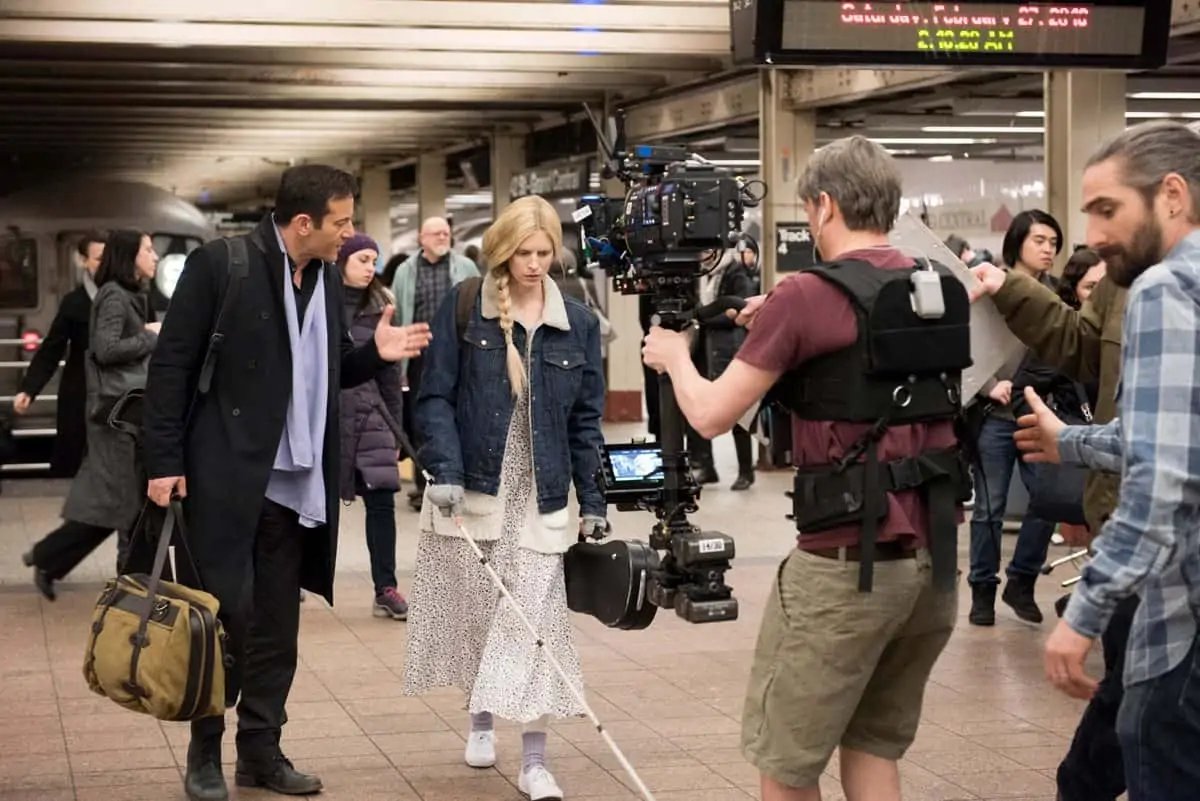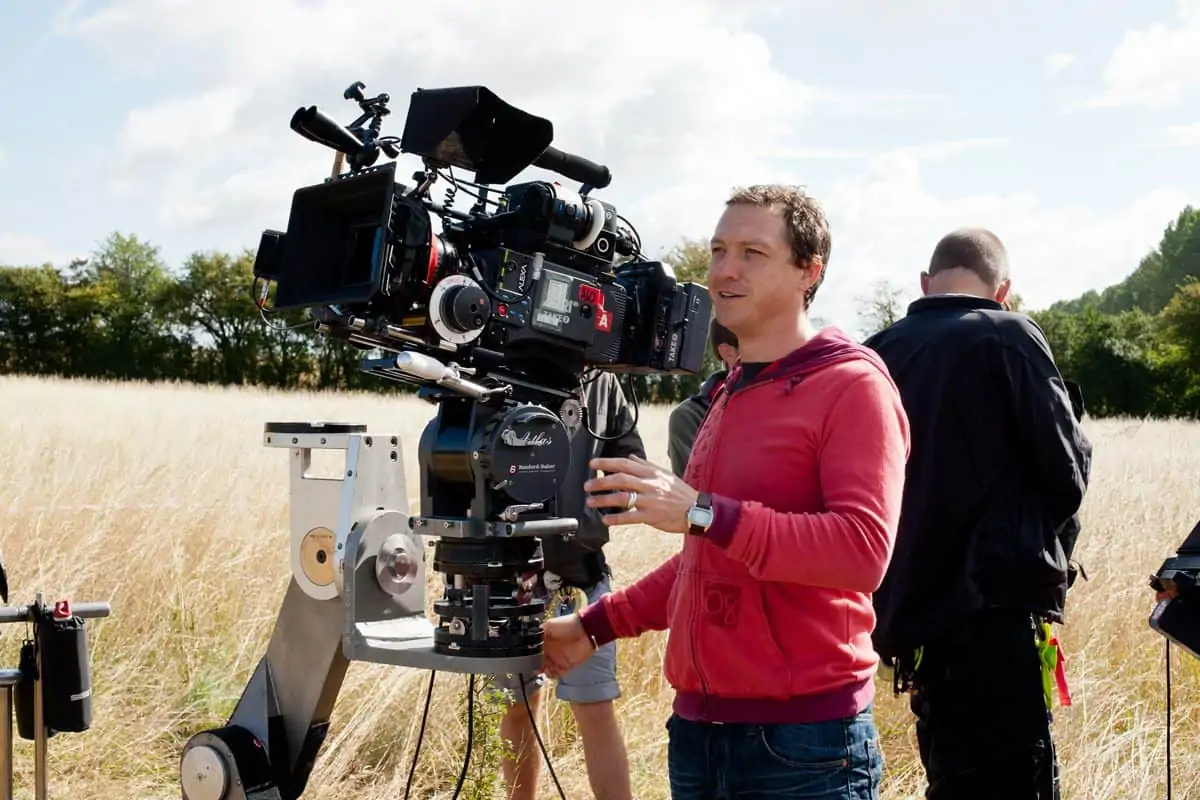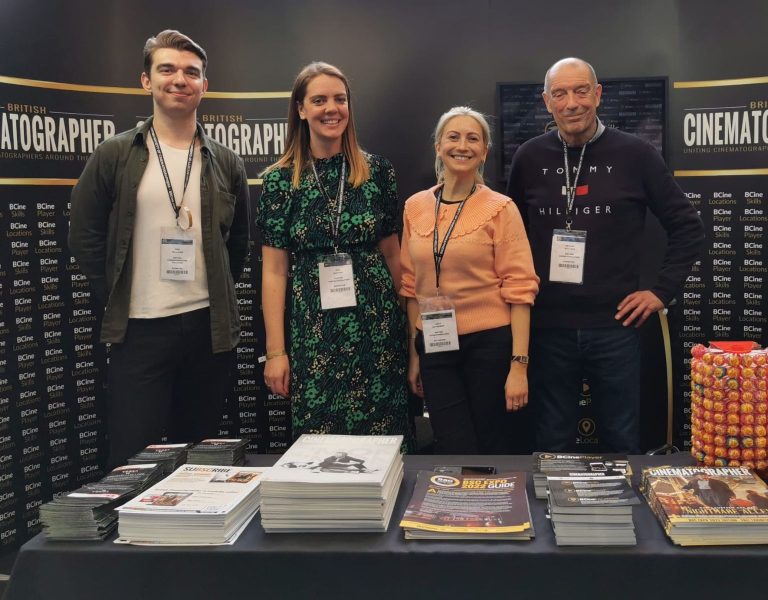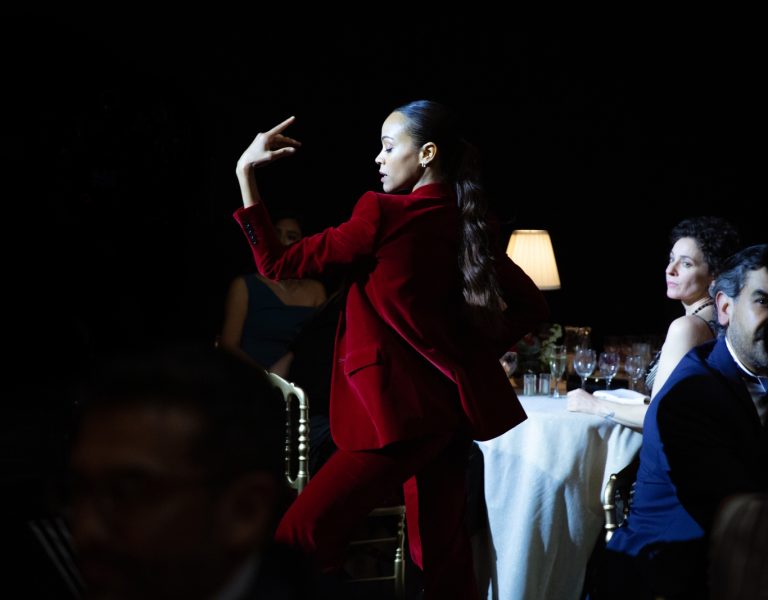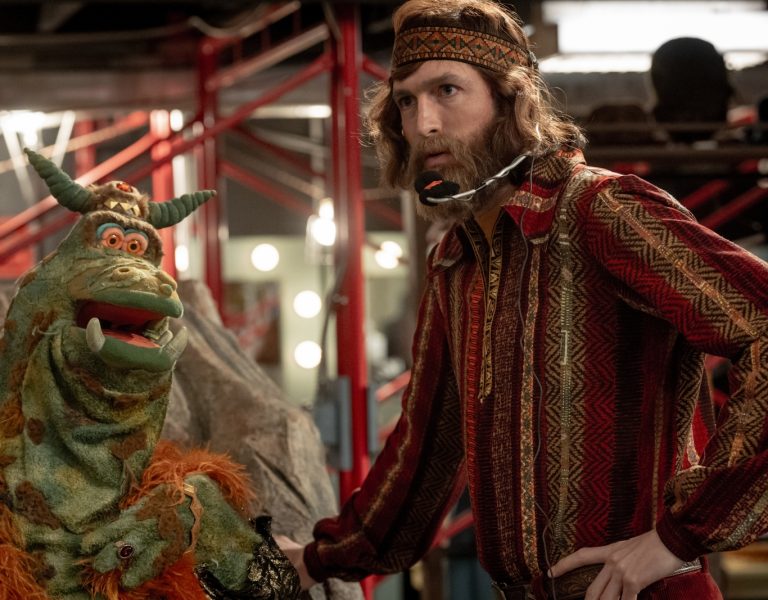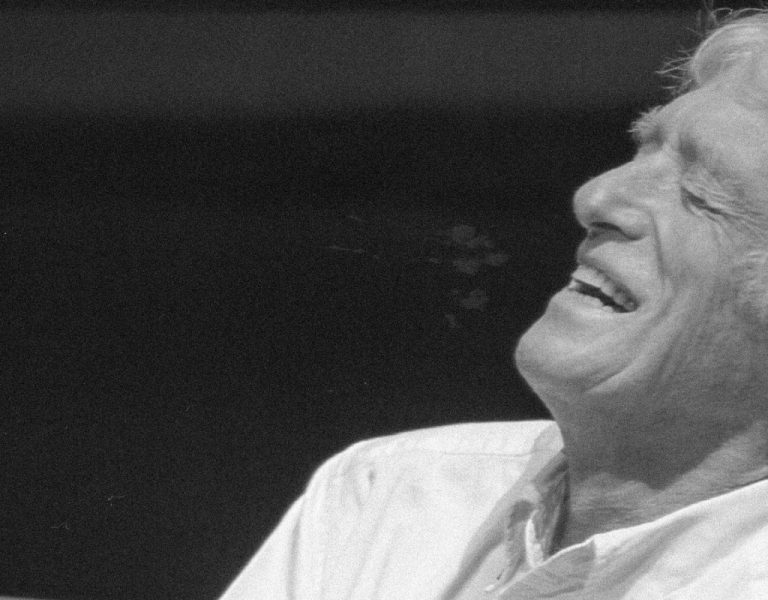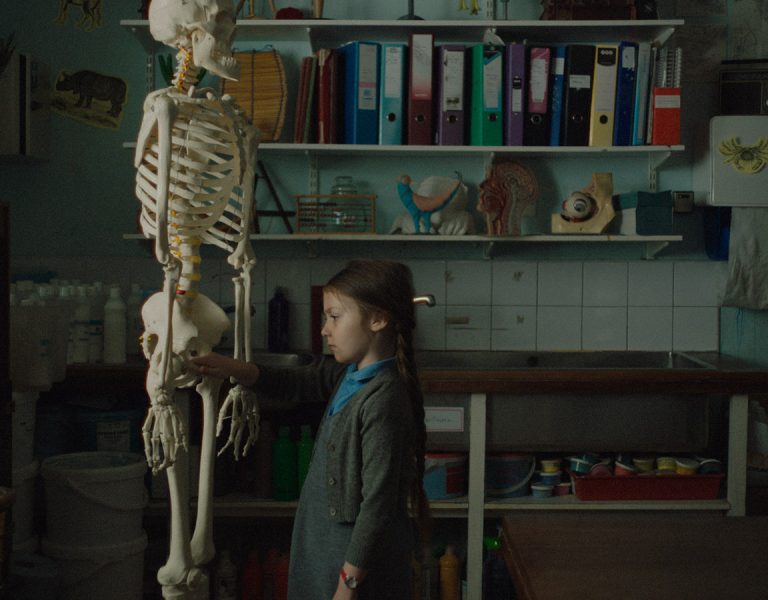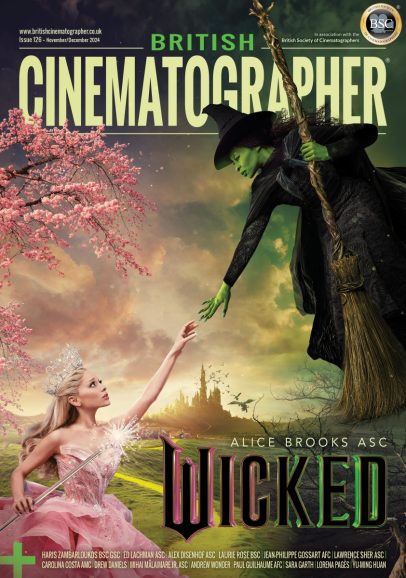CUTTING THROUGH THE NOISE
Translating Don DeLillo’s inimitable novel White Noise which spans family dynamics through to apocalyptic doom into film form was a challenge director Noah Baumbach and cinematographer Lol Crawley BSC embraced, tackling technically ambitious sequences, and experimenting with new visual concepts along the way.
It is not enough for a cinematographer to just accomplish a film technically, according to Lol Crawley BSC, “they must also do it in a way that gives the director and actors freedom to achieve what they need through the performance.”. Fulfilling both these goals was a priority when lensing writer-director Noah Baumbach’s White Noise and undertaking elaborate technical sequences because “if the logistics and methodology ever risked negatively impinging on the performance, it was not the right solution.”
The apocalyptic black comedy – Crawley and Baumbach’s first collaboration – offered the opportunity to explore aesthetic values and camera movement in new ways. Early on, Crawley recognised the way in which Baumbach likes to work with actors, and the space and time he needs to hone performances. White Noise united Crawley with previous collaborators including producer David Heyman (Gravity, Marriage Story), who he worked with on The Secret Garden (2020), and editor Matthew Hannam (Swiss Army Man, Wildlife), who he teamed up with on Vox Lux (2018) and who was instrumental in the introduction to Baumbach.

Baumbach’s adaptation of Don DeLillo’s 1985 novel, White Noise follows college lecturer in Hitler studies, Jack Gladney (Adam Driver) and his wife Babette (Greta Gerwig), as they navigate everyday family life, with conversations about their concerns about the inevitability of death thrown into the mix. When a chemical spillage triggers an airborne toxic event and the town is evacuated, the couple and their family make a getaway in their station wagon and embark on a journey which forces them to confront their own mortality.
Reading Don DeLillo’s novel a few years after its publication was a formative experience for Baumbach. “White Noise confronts the idea of death – that the only way to really live your life is to know that it’s going to end,” Baumbach says. “My father gave me the book when I was in college. He was a novelist and loved movies, and White Noise was kind of a synthesis of everything he was into. He passed away in 2019, and when I reread the book that same year, I was highly affected by it. DeLillo presents us with the strategies and routines that we’ve invented to make this seemingly unthinkable idea acceptable, and then unravels those defenses.
“The book is about character and family, but there’s also a satirical nature to the structure and story. I wanted to maintain that tone, but I needed to find cinematic analogues. And since the book is essentially about an American culture that is blanketed by media – TV, radio, advertisements, the culture of movies and movie storytelling – I saw it in movie terms. There was the potential for great movie moments.”
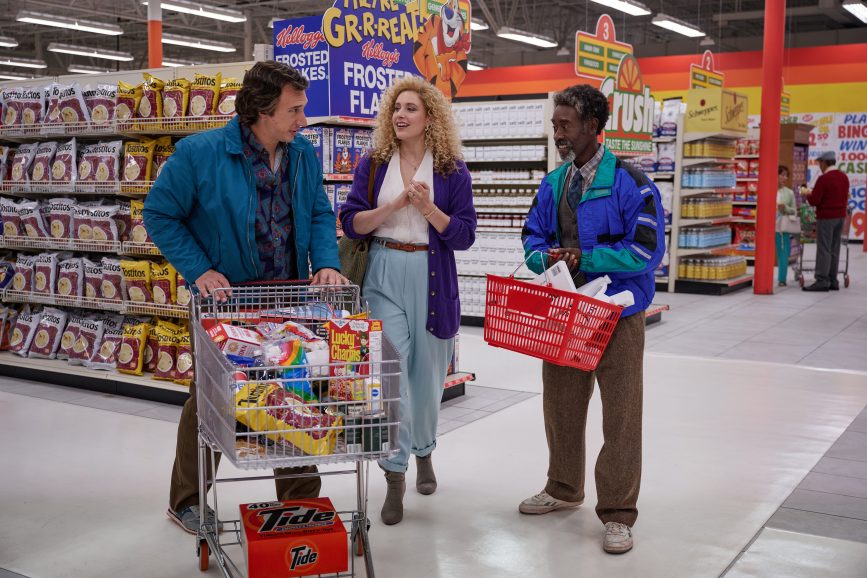
For Crawley, the appeal of Baumbach’s adaptation of White Noise is what drew him to the director’s other films: “terrific writing and dialogue, I really get his humour, and I find his examination of family fascinating.”. Having grown up in the UK, the cinematographer was “less familiar with the book the film was based on than those who grew up in America where it’s a popular text in colleges”, so he read the novel whilst also reading the script.
Expanding outside the realms of Baumbach’s previous productions such as the Oscar-winning Marriage Story (2019) and The Meyerowitz Stories (2017) which explore personal stories of relationships and family, White Noise still places family dynamics at the fore but veers off in new directions and expands in scale, incorporating high-octane action scenes and apocalyptic threat.
The narrative is divided into three distinct acts based on the novel’s structure – the first being a satire and examination of domesticity and academia, featuring a lot of dialogue and interior scenes. “When the Gladney family is then spat out into this evacuation as they try to outrun the large toxic cloud, the film feels more like a 1970s disaster movie and is Close Encounters Spielbergian in its camera movement. The final act – as Jack Gladney unravels – turns almost into a film noir,” says Crawley, who was fascinated by the way the narrative unexpectedly shifted.

Heightened aesthetic
From the project’s beginnings, Baumbach expressed a desire to shoot 35mm and anamorphic and to avoid making a movie that simply tried to copy a 1980s look. “I shot widescreen on Greenberg, but I’ve never shot anamorphic,” Baumbach says. “I liked anamorphic for White Noise partly because of the period; many of the movies I love and grew up with from that era were shot on anamorphic. It also worked very well with our staging, the movement of the actors, all the information and colour we packed into individual shots and the way we were using overlapping sound. Because of the scope of the frame, in a wider shot, the audience can sometimes choose where they want to look. But then a close-up in anamorphic can feel quite dramatic. Depending on what lens you use or your framing, you can convey real scope or real intimacy.”
Crawley adds: “Noah’s a very visual filmmaker and he wanted to make a film that referenced the 1980s but still felt like a 2022 film. The novel, although it’s written in 1985, does not explicit say when the story is set. It’s timeless and in a location nonspecific place.”
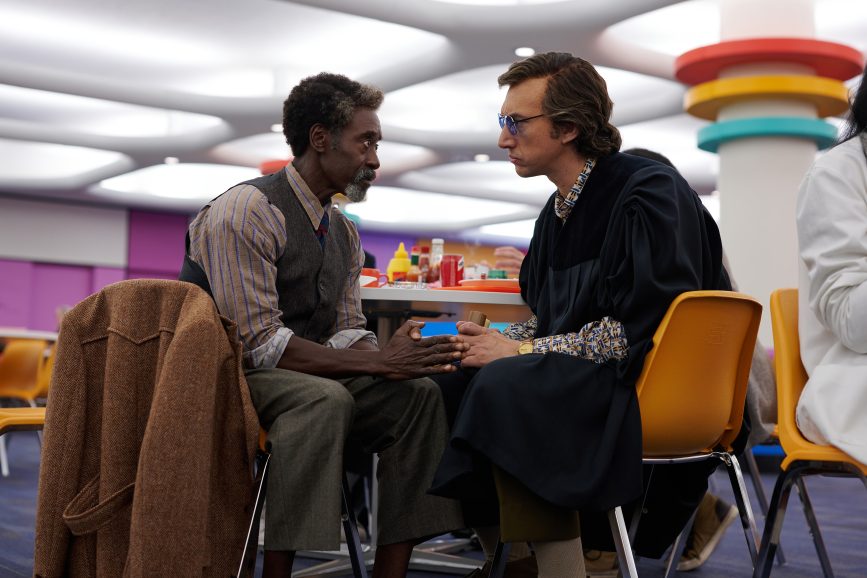
While not wanting to “carbon copy” 1980s films, those that were referenced included movies made by director Adrian Lyne and productions featuring “a strong Hollywood blue moonlight”. Crawley admits this heightened aesthetic was a departure for him as his style is usually “quite naturalistic” and he can be “a little obsessive when it comes to motivation of light”.
Cinematographer and photographer Robby Müller NSC BVK’s use of red and green and Polaroids was influential, notably for sequences towards the end of the film. Elsewhere, camera movement used for a scene in Hitchcock’s 1946 movie Notorious (Cin. Ted Tetzlaff ASC) inspired a sequence in White Noise that unfolds in a boy scout camp at bedtime. “It starts with a wide shot, and hones in – using quite an ambitious camera move which required pulling beds and extras out of the way – ending on a pill in Babette’s hand which she then swallows,” says Crawley.
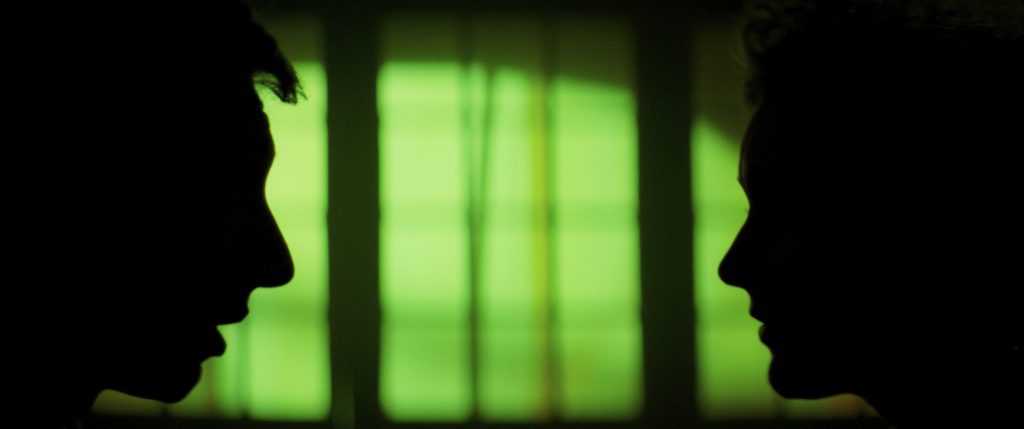
To achieve this complex sequence, Crawley worked closely with “legendary” key grip, Mike Popovich, dolly grip Jim Wickman. and their great team as well as the art directors and art department. “It was a mixture of using a zoom on a fixed arm crane and then physically tracking in,” he elaborates. “I don’t think anything needed to be painted out in post because we weren’t tracking on track, we were just on the boards, which meant as we pushed in, the art department had to remove all the beds and pull all the sleeping extras out of the way.”
This elaborate scene demonstrates one of Baumbach’s key objectives for the film – cutting through the white noise. This flows through the sound design when multiple conversations are overlapping. “Everyone is talking, but nobody is actually talking to each other. They’re all just having these separate conversations,” says Crawley. “Our visual representation of this was achieved through moments such as the overload of information in the supermarket when you’re try to cut through the visual white noise. Andreas Gursky’s two-part colour photograph of a supermarket, 99 Cent II Diptychon, was an influence for the shot where the camera rises up above the store.”
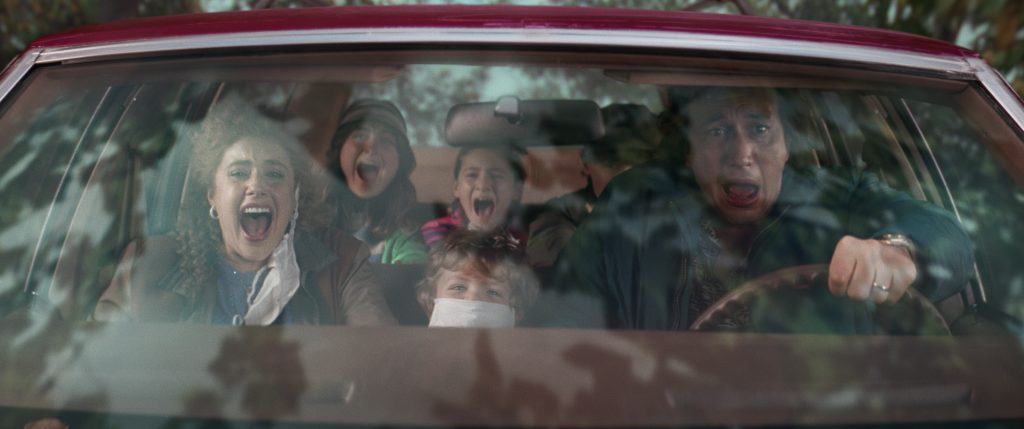
Temple of consumption
When lighting the supermarket, the colour temperature of the fluorescent tubes was embraced rather than swapping them out for LED tubes which “would have been a huge undertaking” Crawley did not feel was necessary. While leaning into the colour temperature of the bulbs, Crawley and gaffer Larry Sushinskiy warmed them by putting orange gel on the outside of all the windows, reducing the disparity between the exterior light coming into the store, and the existing fluorescence.
“The danger when doing that is you end up with an environment that is illuminated rather than lit,” points out Crawley. “You’re always looking to put some shape into the lighting, so it’s about finding that sweet spot between wanting it to feel like a supermarket, but not wanting to completely be at the mercy of that.”

Lighting on set helped achieve this, but it was difficult to “get right in the grade because the aesthetic for a supermarket could feel quite cold and clinical whereas Noah wanted the space to be like a temple of consumption the characters really enjoyed visiting and offered all these wonderful products.”
As it needed to feel like an inviting space without being unnaturally warm, sometimes the brightness was pushed while being delicate with saturation and cautious the visuals should not look too forced. “The inherent colours that existed in the supermarket had been carefully designed by production designer Jess Gonchor and his team, and if you then start to really push the saturation too much, it becomes too cartoony,” says Crawley. “It’s about riding that balance in the grade of trying to achieve the correct brightness, saturation, and colour temperature.”
The supermarket also provides the location for a unique end credits sequence which sees synchronised shoppers moving in unison to the backing track of LCD Soundsystem’s original song “New Body Rhumba” and references scenes such as the ten-minute-long tracking shot which moves along the supermarket checkout aisles in Jean-Luc Godard’s Tout va bien (1972). This was achieved through extensive rehearsals to perfect the camera movement and by mostly using Steadicam which offered the flexibility and speed needed for the camera to travel through the supermarket. At the end of the sequence a crane shot opens up the scene into a wide shot of the whole store with everyone in view.

“We visit the supermarket three times during the film, and the second time there’s a moment when you see the bags being opened at the checkout and the actions of the store workers start to synchronise. They don’t fully tip into a Busby Berkeley musical style, but they allude to what is to come in the end credits where it evolves and unapologetically becomes this musical number.”
Marking Baumbach’s most extensive on location shooting, most of White Noise was shot in Ohio, bar the train crash scene that yields The Airborne Toxic Event which was staged in Georgia. Ohio was chosen for its landscape and locales that could service an everytown feeling. Production designer Gonchor (True Grit, Hail Caesar!) was integral in creating a 1980s feel in line with Baumbach’s aim for a heightened and lived-in reality, notably in the supermarket environment which was recreated from scratch in an abandoned hypermarket.

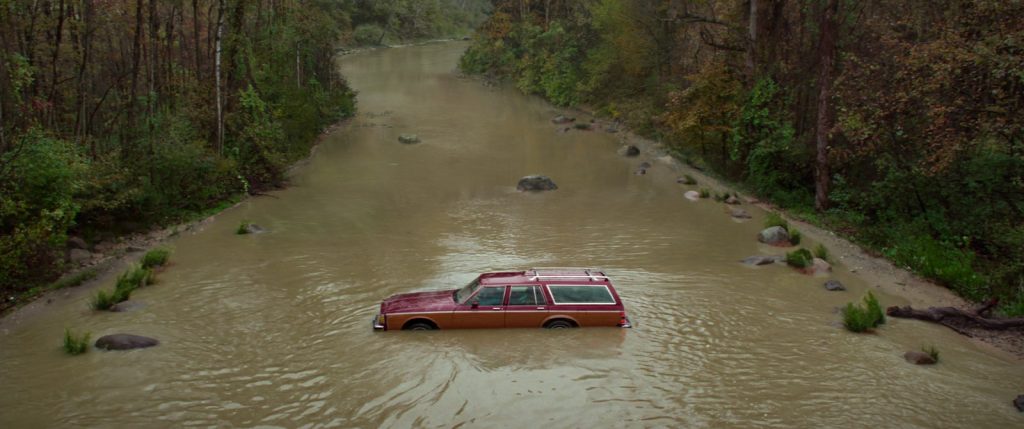
As White Noise is a story about consumerism’s grip on society, Baumbach and Gonchor looked to the vibrant colours of a Rubik’s cube as a guiding palette for environments such as the supermarket. The symbols, shapes and colours of the supermarket serve as a “nucleus” for the entire film, Gonchor says, to the point that various products painstakingly crafted by set decorator Claire Kaufman and her team find their way into other parts of the story.
The supermarket “was a synthesis of the ‘white noise’ and how everybody is being persuaded by consumers and product,” says Gonchor. “I don’t think there was any set that didn’t get some of the supermarket in there.” The Gladneys’ house was also significant in establishing and developing character on screen. Gonchor and company built the entire interior from the ground up, including two floors and a porch, with the aim of depicting a Victorian home that served as a sort of “container” for a group of colliding lives.

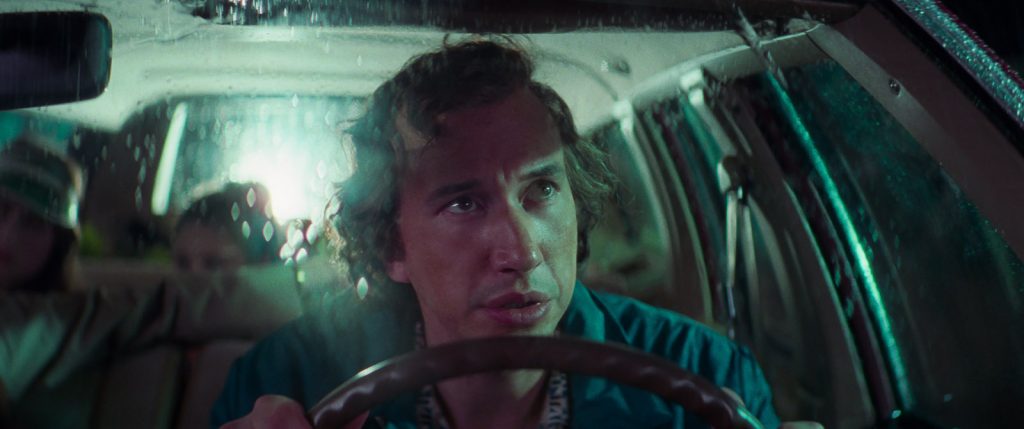
“Other locations such as a motel, was a mixture as Jess and his team built the facade of it underneath this fabulous labyrinth of bridges in Cleveland and the interior was shot on stage in Cleveland,” says Crawley. “This meant we didn’t have to build the entire set on location, and we could shoot some of the interior scenes earlier which worked better for the schedule. I was really pleased with the interior of the motel, and I love the colours. We used large LED screens to supplement the television light in the room and light the actors. I think the contrast of that turquoise-blue and sometimes purple against the green and red works really well.”
The pivotal sequence that takes place in the motel was informed by a noir aesthetic and a mixture of crane work, handheld and Steadicam work was used to create suspense as Jack approaches. Crawley also wanted to use “close almost distorted lenses” on the mysterious character of Mr. Gray [a researcher behind the drug Dylar which is being developed to suppress the fear of death] inside the motel. “So, we were really creeping over him with the lens, in contrast to the shots of Jack. By combining two images together in post we also created a visual that looked like an old-fashioned split diopter effects for a moment when Mr. Gray is really close in the foreground, and too deep, too sharp, like something from Touch of Evil,” says Crawley.
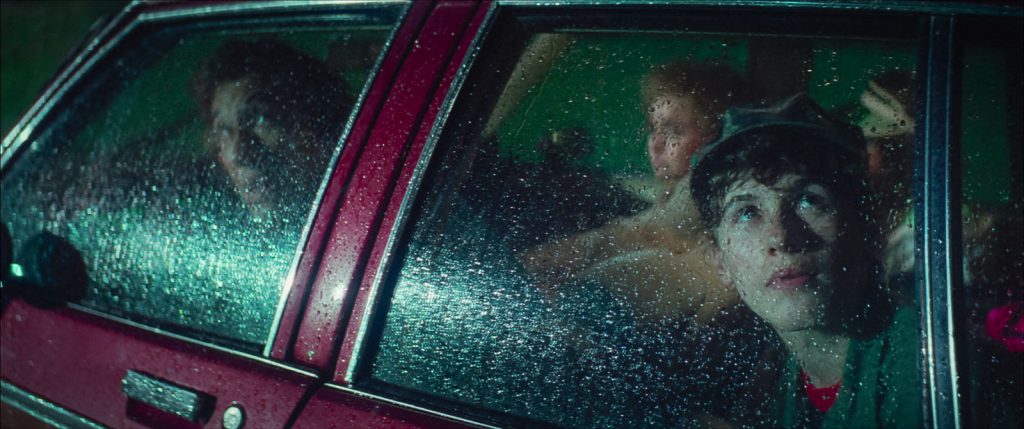
The texture of film
White Noise is the second Netflix production Crawley has shot on film, following The Devil All the Time (2020), and he found Netflix to be very supportive on both occasions. “It wasn’t ever really a question – Noah really wanted to shoot on 35mm film and prefers film in general,” says Crawley. “And as we wanted to embrace that ‘80s aesthetic, it seemed like a no-brainer.”
Shooting with his “go-to stocks” the Kodak Vision3 250D 5207, Vision3 500T 5219, Crawley “didn’t want to go much slower with the stock because we wanted to embrace the grain. Although the 50D is a fantastic stock and I may well be shooting my next project on it, it just felt a little too clean. We wanted the texture of film.”

Combining shooting on film with the use of Cooke Anamorphic/i SF lenses “did a lot of the aesthetic heavy lifting”. Being a fan of the Cooke look, many of Crawley’s previous films were shot on Cooke S4 spherical lenses. “One advantage of shooting White Noise on Cooke Anamorphics was they didn’t distort too much on the wide angle when we were filming in tight spaces, even using the 32mm,” he says. “For some scenes where we wanted linear flares, we used Hawk Anamorphic lenses. For instance, when the Gladney vehicle leaves the house for the first time and reverses towards the camera, beautiful purpley blue linear flares were created.”
Arricams have been significant throughout Crawley’s career, including his first feature, Lance Hammer’s Ballast (2008). “I just love them and the Arricam LT was perfect for this production,” he says. “Although there wasn’t a lot of handheld work, they’re excellent handheld cameras, and just a wonderful workhorse.”
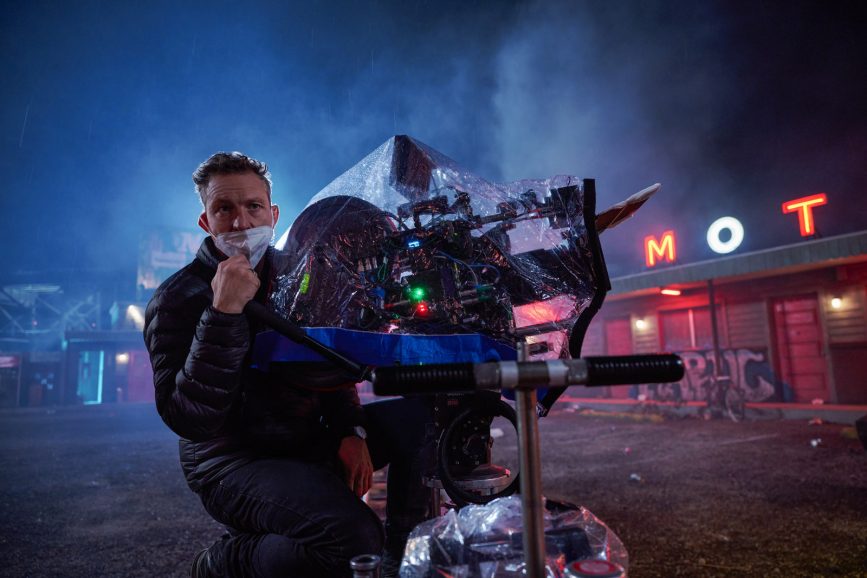
Crawley enjoys operating and has done so on the films he’s previously shot. “But as I’ve been increasingly filming in America, and the films I’m shooting are becoming more ambitious, it makes sense to work with an experienced operator,” he says. “However, when I’m doing a handheld sequence, I like to operate the camera as I just love doing it and it’s a nice opportunity to be there with the actors.”
One memorable moment of handheld-lensed action follows the night-time evacuation when the family wake up and flee the boy scout camp. The large set piece was shot over many days by multiple camera teams and involved much second unit stunt work and Steadicam. “The family jump into a car and chase a Land Rover through a wood. I suggested I got in the car with a handheld camera to capture that, shooting Jack and then Babette before spinning 90 degrees to film their son Heinrich in the backseat. Adam [Driver] was actually driving and although he did it really well, he drove quite ferociously, so I was thrown around in the back,” says Crawley.

“It was quite brutal, but I really wanted those shots to be handheld because I wanted that energy. The danger when there are limited angles you can shoot in a car, and if you’re just locked to the car, is that it can become a little lifeless. However, when the car finally hits the creek, and starts floating downstream, we locked the cameras more because it was a moment of calm and eerie stillness, and a deliberate aesthetic choice.”
Baumbach’s strong designs for how the camera would move were formed very early in prep. For example, when Jack, an academic and logical character, realises Babette is having an affair, he starts to unravel. “When Jack is smashing the trash can and trying to find something, Noah had this idea the camera would revolve around, leave Jack and then find him again in another place, and become untethered like his character,” says Crawley.

To achieve complex shots that required multiple moving parts to be precisely choreographed, the cinematographer maintained a close dialogue with A camera operator Erin Henning, who he had worked with on The Devil All the Time and who “brings a great deal of operating experience”.
“For those complicated scenes the collaboration with the second unit DP, Bruce McCleery ASC, the stunt team and Noah was crucial,” says Crawley. “A lot of it was storyboarded early on, so we knew what we were trying to achieve. For example, much of the mass exodus scene was storyboarded, and then the second unit director and DP would rehearse it, film it digitally and then Noah would review it and we would refine it together.”
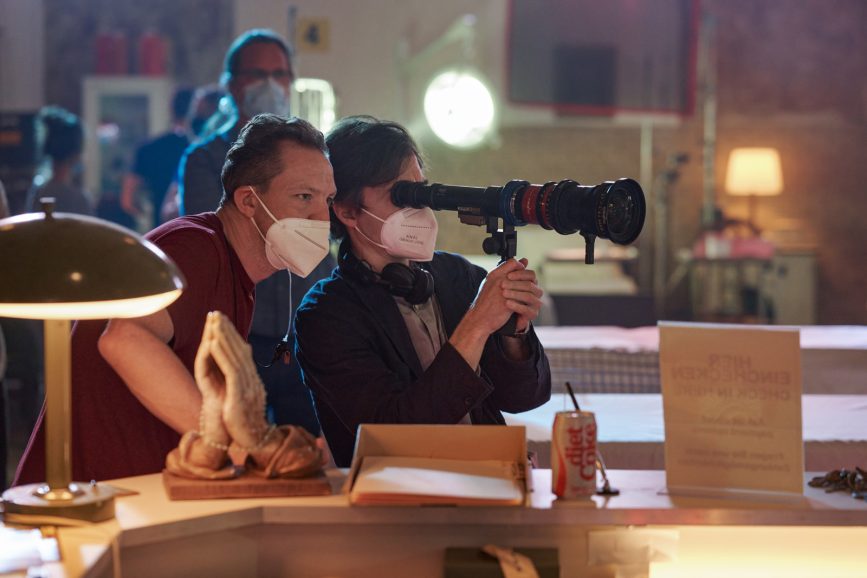
The main cast were then captured and combined with any additional footage the second unit shot over many days with doubles. “When working with so many people, components, and methodologies, it’s important to keep that life to the camerawork and not be too preemptive. It’s quite easy to go, ‘Okay, there’s a car hitting this car, let’s just have this locked off camera down here.’ Whereas it still needs that sense of spontaneity and needs to feel like it’s just been caught.”
Matching the light in the grade was also difficult because the footage was shot at different times of day. “It can be really tricky to even out all of those sequences and make them feel seamless, but the wonderful colourist, Peter Doyle from PostWorks in New York was terrific in that regard,” says Crawley.
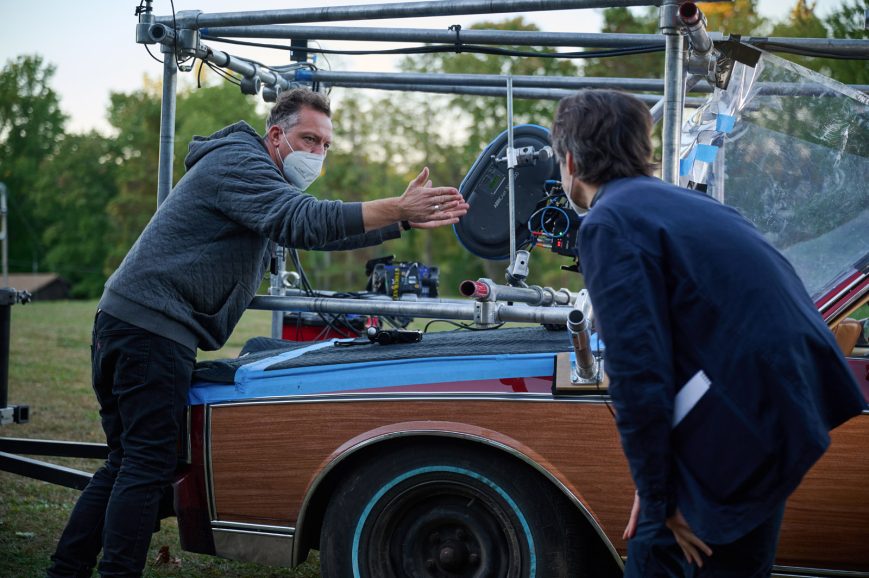
The boy scout camp also presented difficulties when shooting due to the amount of dark wood. “When you’re filming scenes at night in locations like that with lots of practical lamps, it’s hard to get information in the background because it just falls away to nothing,” he adds.
The exterior of that location was the setting for a long night-time walk and talk between Murray Siskind (Don Cheadle) and Jack as they pick their way through people who are camping. While Baumbach would generally prefer to use dolly and track rather than Steadicam to capture such a scene, on this occasion the filmmakers realised Steadicam was the best solution. “It meant we could do longer runs and deviate from it just being a straight line, so we could adapt to where the actors were going.”

Lighting the scene in a way that allowed the actors to come in and out of shadow in a natural way was necessary. “You also don’t want them to stop in darkness,” adds Crawley. “One trick we used was working with xenon lights on towers and cranes to represent helicopter lights and flashing them across so they would catch the actors from time to time and cheat the audience.”
As the scene needed to be shot in one night, the pressure was on for cast and crew. As much dialogue was captured as possible without interruption because the more it was fragmented, the more the scene would grow and become unachievable. “By the end of the scene, I could see the sky becoming bluer as the sun came up. It was a challenge, but very satisfying to accomplish in one go,” says Crawley.
Sequences playing out in a large church bursting with lavender hues also required precise planning. “That venue was amazing with all these beautiful colours of stained glass and the lavenders of the costumes, but it was a difficult scene due to the logistics of working in the church and the planning and direction of the overhead shot of beds with some of the characters on them and another character being pushed in a shopping trolley in between them,” explains Crawley.
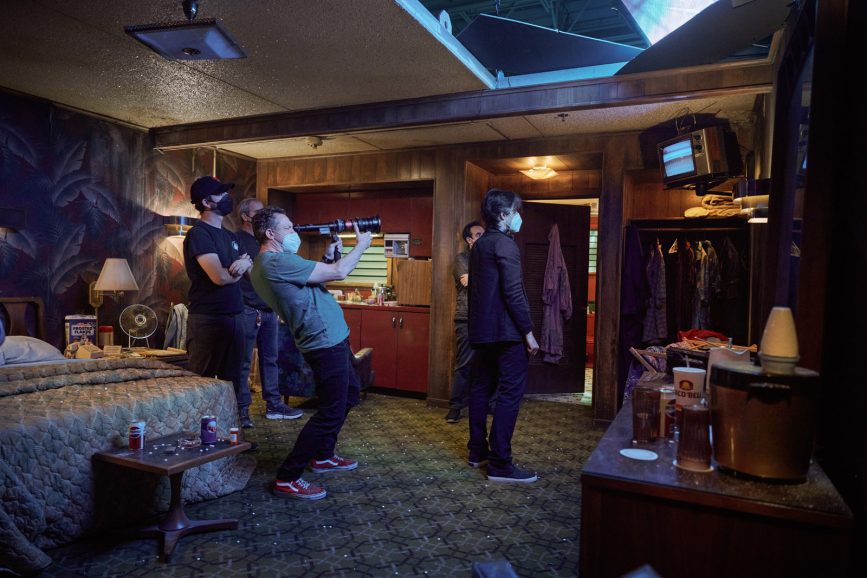
Filmmaking adventures
Multiple technically daring sequences took place in the car including when the family first leave the house during the evacuation. Baumbach wanted to capture this using a 360-degree rotation inside the vehicle, beginning on Jack, moving to the radio and then onto Babette before filming the three children in the back. This required a pod that allowed the vehicle to be controlled by Allaen Padelford on top of the car.
“The car makes contact with the road rather than being on a trailer and the roof of the vehicle is cut out and two sliders are placed in there allowing the head of the camera to be moved left, right, back and forth,” explains Crawley. “The camera –– which is operated remotely from outside the car –– is then inverted and shot through a prism, so you take up a much smaller area with the camera, and it can be rotated.”

Lighting the scene was demanding as the car drives through a dark environment and then pulls up at a line of traffic. Several LEDs were rigged around the car and out of view of the wide-angle shot and their intensity was fluctuated remotely, bringing them up and down to mimic passing cars or streetlights.
Most of that driving sequence was shot on a custom-built virtual stage in Cleveland and constructed by Sam Nicholson ASC at Startgate studios in LA to avoid the actors needing to be shot at night in a real car and to give Baumbach and the cast the time and freedom they needed. “The static car was shot on the volume while two cars outside the vehicle were dragged backwards and forwards to mimic the other line of traffic with LED screens behind that. This was intercut seamlessly with the work we had to capture on location,” says Crawley.

“Due to the angle of view through the car, and the fact there were two other cars behind which we needed to see, the screen had to be very wide. The further away it was from us, the wider it needed to be, so we didn’t shoot off left and right. We also sent out crew in a vehicle at night with six RED cameras to capture the background imagery digitally that would be displayed on the screens.”
Keen to be involved in every aspect, the cinematographer joined the crew capturing the array footage. “It was also a learning curve for me, and I wanted to see how it was done because it was my first experience of virtual production bar shooting pick-ups on a volume for The Snowman,” he says. “Noah was pleased we approached it that way which was gratifying because a lot of time and resources were dedicated to it.”
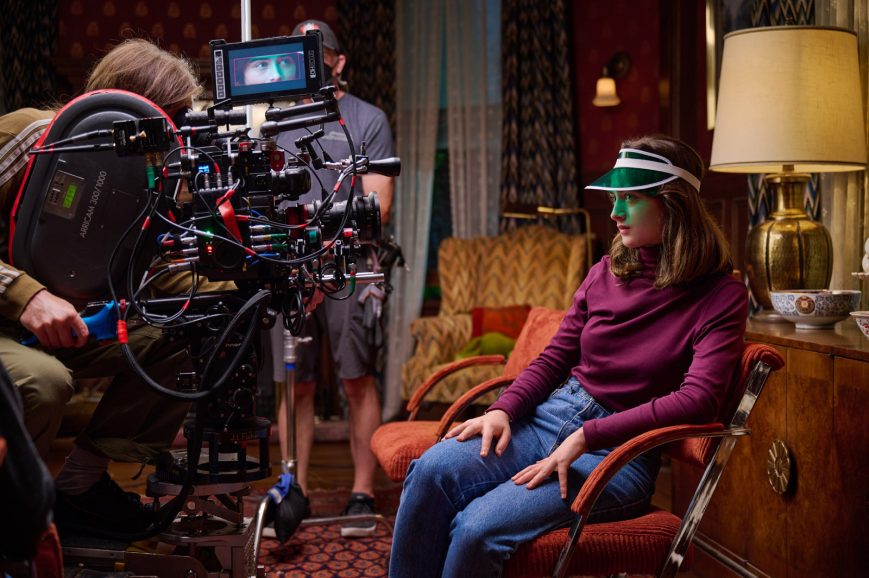
Ever-evolving LED lighting – which has been revolutionary for the industry and Crawley’s work – was particularly valuable for White Noise’s car work captured on LED stage which used lightweight, portable and programmable lights bars. Using LED fixtures that could be remotely operated allowed complete control to mimic the car headlights and the streetlamps.
When shooting scenes of the night evacuation on a real road, no streetlamps were available, and time and budget would not permit the installation of any. “Instead, we used about 30 fairly basic Wacker lights you find when roadside maintenance is being carried out. They consist of a generator with four lamps on which we positioned at intervals of 150 feet down the road to light the entire scene,” says Crawley. “And then in post, they were changed to streetlamps and the bases were painted out, just keeping the illumination.”
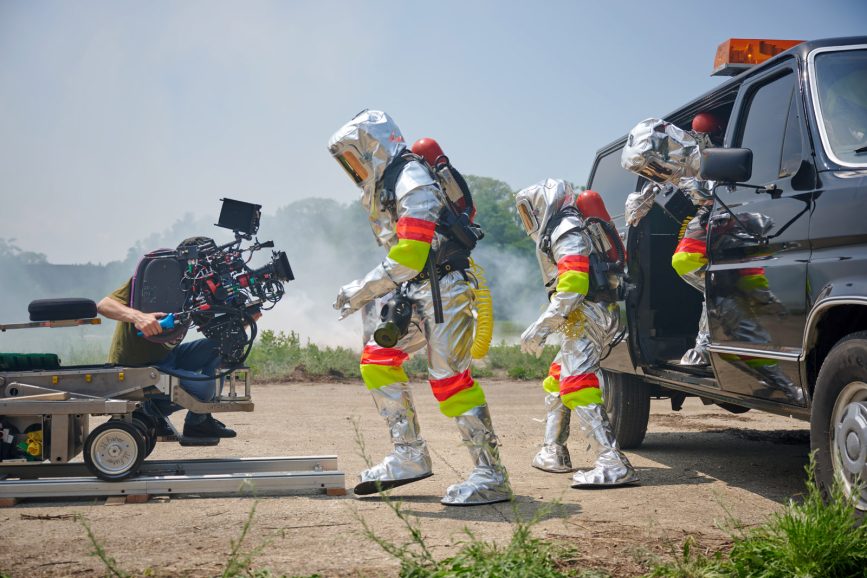
The car sequences captured on virtual stage once again demonstrate Crawley’s ambition to fulfil technical goals in a way that also accommodates the needs of the director and actors, offering ultimate filmmaking freedom.





